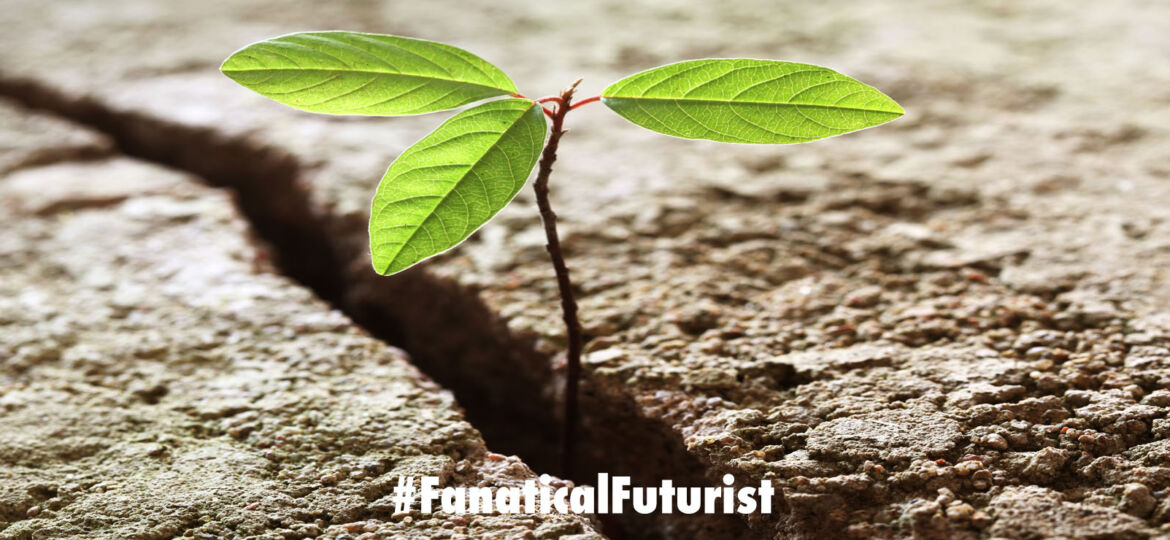
WHY THIS MATTERS IN BRIEF
Concrete is a huge contributor to global green house gas emissions, so finding new ways to curb those emissions helps in the bigger battle against climate change.
In an age where we can 3D print houses and entire communities using a range of different materials one of the biggest challenges new developers face is 3D printing with concrete whose green credentials are, shall we say less than green, especially as concrete contributes up to 10 percent of all greenhouse gas emissions – a fact that doesn’t sit well with the world’s environmentally conscious startups. Now though a team of engineers has developed a “composite binder” that’s made primarily of fly ash – a by product of coal fired power stations – that can replace the environmentally damaging Portland cement in concrete.
The resulting material is cementless and environmentally friendly, the engineers say.
Fly ash binder does not require the high-temperature processing of Portland cement, yet tests show it has the same compressive strength after seven days of curing. It also requires only a small fraction of the sodium-based activation chemicals used to harden Portland cement.
More than 20 billion tons of concrete are produced around the world every year, and that’s increasing, using a manufacturing process that contributes 5 to 10 percent of carbon dioxide to global emissions – a number that’s only surpassed by transportation and energy as the largest producers of the greenhouse gas.
Manufacturers often use a small amount of silicon and aluminium rich fly ash as a supplement to Portland cement in concrete.
“The industry typically mixes 5 to 20 percent fly ash into cement to make it green, but a significant portion of the mix is still cement,” says Rouzbeh Shahsavari, an assistant professor of civil and environmental engineering and of materials science and nanoengineering at Rice University.
Previous attempts to entirely replace Portland cement with a fly ash required large amounts of expensive sodium based activators that negate the environmental benefits, he says.
“And in the end it was more expensive than cement,” he says.
The researchers used something called Taguchi analysis, a statistical method developed to narrow the large phase space, all the possible states, of a chemical composition, followed by computational optimisation to identify the best mixing strategies.
This greatly improved the structural and mechanical qualities of the synthesised composites, Shahsavari says, and led to an optimal balance of calcium-rich fly ash, nanosilica, and calcium oxide with less than 5 percent of a sodium-based activator.
“A majority of past works focused on so-called type F fly ash, which is derived from burning anthracite or bituminous coals in power plants and haslow calcium content,” Shahsavari says. “But globally, there are significant sources of lower grade coal such as lignite or sub-bituminous coals. Burning them results in high-calcium, or type C, fly ash, which has been more difficult to activate.
“Our work provides a viable path for efficient and cost-effective activation of this type of high-calcium fly ash, paving the path for the environmentally responsible manufacture of concrete. Future work will assess such properties as long-term behavior, shrinkage and durability.”
Shahsavari suggests the same strategy could be used to turn other industrial waste, such as blast furnace slag and rice hulls, into environmentally friendly cementitious materials without the use of cement.
The results are reported in the Journal of the American Ceramic Society.
Source: Rice University

















[…] and even though there are now an increasing number of so called Green Concretes on the market, that replace Portland cement with fly ash or even rubber, as well as new Lavacretes used to 3D print buildings. We even have bricks that […]
[…] so naturally companies everywhere are trying to create carbon neutral and even carbon negative “green” concretes that can help the world meet its emissions […]